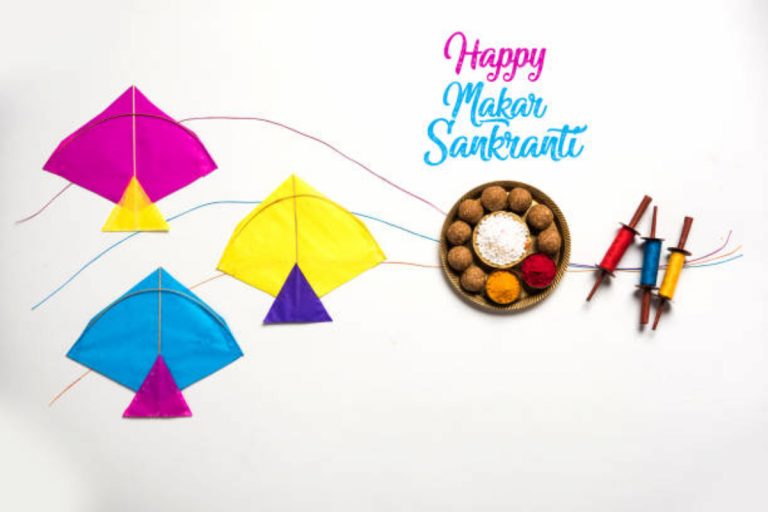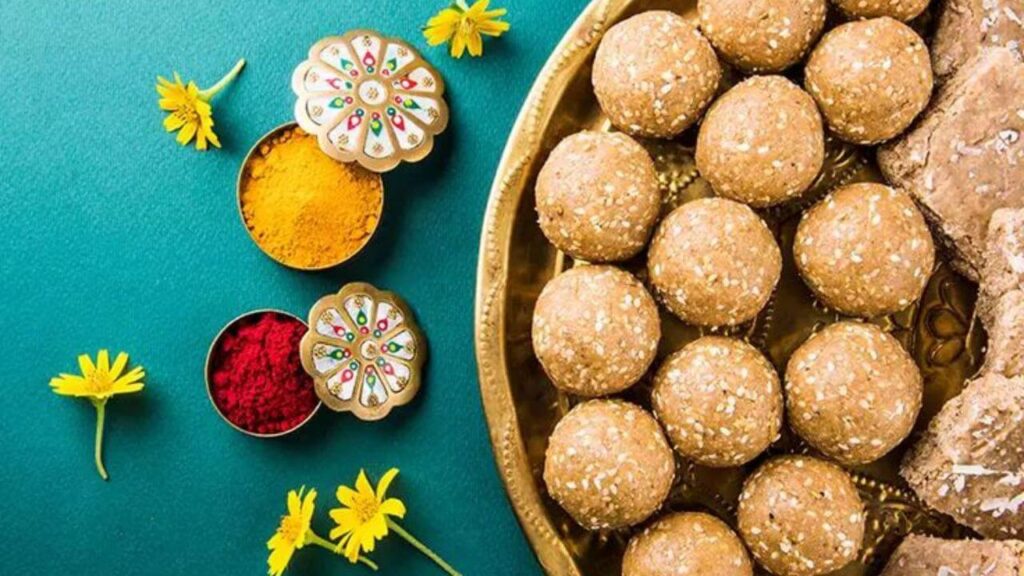
Table of Contents
Makar Sankranti 2025: A Festival of Joy, Gratitude, and New Beginnings
Makar Sankranti isn’t just another day on the calendar—it’s a vibrant celebration of life, a festival that brings communities together with kites in the sky, sweets on the table, and hope in our hearts. It’s the perfect blend of tradition and joy. This year, we celebrate Makar Sankranti on January 14, 2025, so let’s dive into what makes this festival so special!
What Makes Makar Sankranti Unique?
Picture this: The Sun, symbolizing energy and positivity, begins its northward journey, or Uttarayan, moving into the zodiac sign Capricorn (Makara). This isn’t just an astronomical event; it’s a cultural reset—a time to shed the cold of winter and welcome warmth, light, and fresh beginnings.
It’s also a big “thank you” to Mother Nature for the harvest season. Whether you’re flying a kite, sharing sweets, or just soaking up the festive vibe, Makar Sankranti is all about celebrating the simple joys of life.
Why Do We Celebrate Sankranti?
This day holds a lot of meaning:
- Harvest Happiness: Farmers rejoice as they reap the rewards of their hard work.
- Astronomical Magic: The Sun’s transition into Capricorn signals longer days ahead—a literal brighter future!
- Cleansing the Soul: People take holy dips in rivers like the Ganga, Yamuna, and Godavari, believing it washes away sins and brings blessings.
Festivities Across India
Sankranti may have one name, but it’s celebrated in colorful, unique ways across India.
- Punjab – Lohri: The night before is all about bonfires, folk songs, and dance. Think of it as a party where you thank the universe!
- Gujarat – Kite Festival: The skies become a sea of colors as people compete to cut each other’s kites. It’s thrilling, playful, and symbolic of rising above challenges.
- Tamil Nadu – Pongal: A pot of milk and rice boils over, symbolizing prosperity. Families come together to cook, pray, and feast.
- Maharashtra – Tilgul: Sesame and jaggery sweets are exchanged with the words, “Tilgul ghya, god god bola,” meaning “Take these sweets and speak sweetly.”
- West Bengal – Poush Sankranti: Traditional sweets like Pithas are made, and prayers are offered to the Sun God.
- Bihar & Uttar Pradesh – Khichdi: A comforting dish of rice, lentils, and spices becomes the star of the festival, paired with acts of charity.
The Spirit of Giving
One of the most beautiful aspects of Makar Sankranti is its emphasis on daan (donation). From food and clothes to money, people give freely to those in need. It’s a reminder that festivals are not just about celebrating; they’re about sharing.
Kites, Sweets, and Smiles: The Fun Part
If you’ve ever flown a kite on Makar Sankranti, you know it’s not just a game—it’s a rush! The excitement of cutting a rival’s kite while shouting “Kai Po Che!” (I’ve cut it!) is unmatched. Add to that the joy of munching on til ladoos (sesame sweets) and gajak, and you’ve got a festival that pleases your heart and your taste buds.
Astrological Magic of Makar Sankranti 2025
This year, the Shubh Muhurat (auspicious time) falls on January 14, making it the perfect day for prayers, charity, and new beginnings. Aligning your actions with this cosmic shift can bring positivity and success in your life.
A Global Connection
Interestingly, Makar Sankranti isn’t just an Indian celebration. Similar festivals are observed around the world:
- Nepal: Known as Maghe Sankranti, it’s a time for feasting and honoring ancestors.
- Thailand: Celebrated as Songkran, it marks the start of the solar year.
- Sri Lanka: Called Thai Pongal, it mirrors Tamil Nadu’s traditions of gratitude and joy.
Why Makar Sankranti Matters Today
In our fast-paced lives, festivals like Makar Sankranti remind us to slow down and appreciate life’s blessings. It’s about reconnecting with traditions, spending time with loved ones, and welcoming a new chapter with open arms.
Let’s Celebrate Together!
As we prepare for Makar Sankranti 2025, let’s make it a celebration to remember. Fly a kite, share sweets, offer kindness, and embrace the festive spirit. This is your moment to rise higher—just like those colorful kites soaring in the sky.
Wishing you a joyful and prosperous Makar Sankranti!
FAQs
1. Why do we eat sesame and jaggery on Makar Sankranti?
Til (sesame) and gur (jaggery) are warm foods that help combat winter’s chill. They also symbolize harmony and sweetness in relationships.
2. What is the significance of kite flying?
Kite flying is a symbolic way of cutting away negativity and welcoming positivity into life.
3. Is Makar Sankranti celebrated only in India?
No, similar festivals like Songkran (Thailand) and Maghe Sankranti (Nepal) are celebrated worldwide with unique local flavors.
4. What’s the meaning of “Kai Po Che”?
It’s a Gujarati phrase used during kite flying, meaning “I’ve cut it!”
5. How can I celebrate Makar Sankranti if I’m not in India?
You can join virtual celebrations, cook traditional dishes, or simply fly a kite at a nearby park to embrace the spirit of the festival.

